Key Points
- Manmade lakes are created by means like excavation or interrupting a water source to trap water and form an embayment.
- There are more than 53,000 manmade lakes in the US, close to equaling the percentage of its natural lakes.
- Lake Mead is the largest manmade lake in the United States and one of the largest in the world.
- Besides being the second largest manmade lake in the US, Lake Powell attracts countless tourists for its breathtaking scenery.
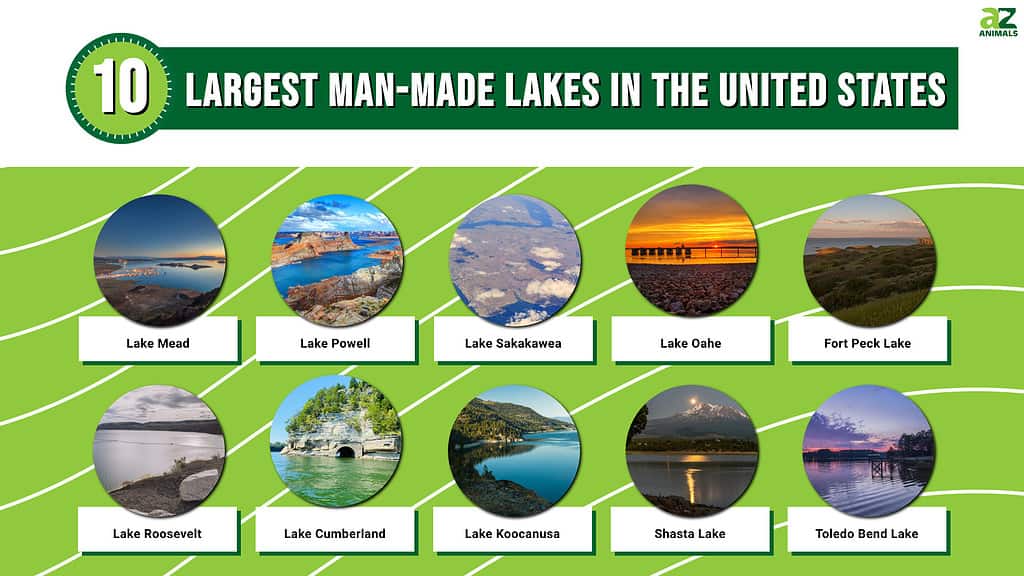
A man-made lake, more commonly called a reservoir, is an artificial lake built along or adjacent to dams to supply water for several purposes. Man-made lakes store fresh water and can be created in many ways, such as excavation and interrupting a water source to trap water and form an embayment. There are plenty of reservoirs spread throughout the globe, and in the United States alone, more than 53,000 lakes are man-made, taking up 48% of all the country’s lakes or almost the same number of natural lakes in the U.S. According to the National Lakes Assessment (NLA), the natural lakes in the country are distributed among an even range of small to large sizes by surface area and volume. In contrast, man-made lakes are significantly smaller. The report also stated that 40% of man-made lakes are less than 10 acres in surface area. Despite this, some reservoirs are still vast enough to seem like natural lakes.

Reservoirs can serve many purposes, such as providing hydroelectric power, drinking water, irrigation for agriculture, flood control, fisheries, recreation, or navigation from one place to another. They can also create habitats for a vast array of animals. Many of the largest ones in the US serve multiple purposes at one time.
While man-made lakes aren’t truly part of nature’s beauty, they’re still magnificent and beautiful places. Many are loved by locals for the outdoor recreation activities they offer and the habitats they provide are incredibly valuable to the local wildlife.
So, what are these massive man-made lakes, and where can we find them? Below, we will explore the 10 largest man-made lakes in the United States.
The 10 Largest Man-Made Lakes In The United States
1. Lake Mead, Nevada

Beautiful Lake Mead, serenely surrounded by mountains, is the largest man-made lake in the U.S.
©iStock.com/Sean Pavone
With a total capacity of 28,945,000 acre-feet and stretching 112 miles long, Lake Mead tops as the largest man-made lake in the United States. With the deepest point that measures 532 feet and a shoreline that extends up to 759 miles, it also ranks as one of the biggest man-made lakes in the world.
Given its immense size, it’s no surprise it’s the object of curiosity and of the question: “Is Lake Mead man made?”. Thanks to the information provided right here, it is.
Lake Mead is located at the Arizona–Nevada border and was formed by the damming of the world-famous Hoover Dam in the Colorado River. Established in 1936, the reservoir was built to provide hydroelectric power, water supply, recreational activities, and a habitat for diverse wildlife. Although Lake Mead is the largest dam in the U.S. based on capacity, it doesn’t usually fill up due to the prolonged drought in Arizona, Nevada, and California. As Lake Mead supplies water to over 20 million people living around these states, the last time it filled its capacity was in 1983. Often, Lake Mead sits at around 40% of its capacity.
2. Lake Powell, Arizona
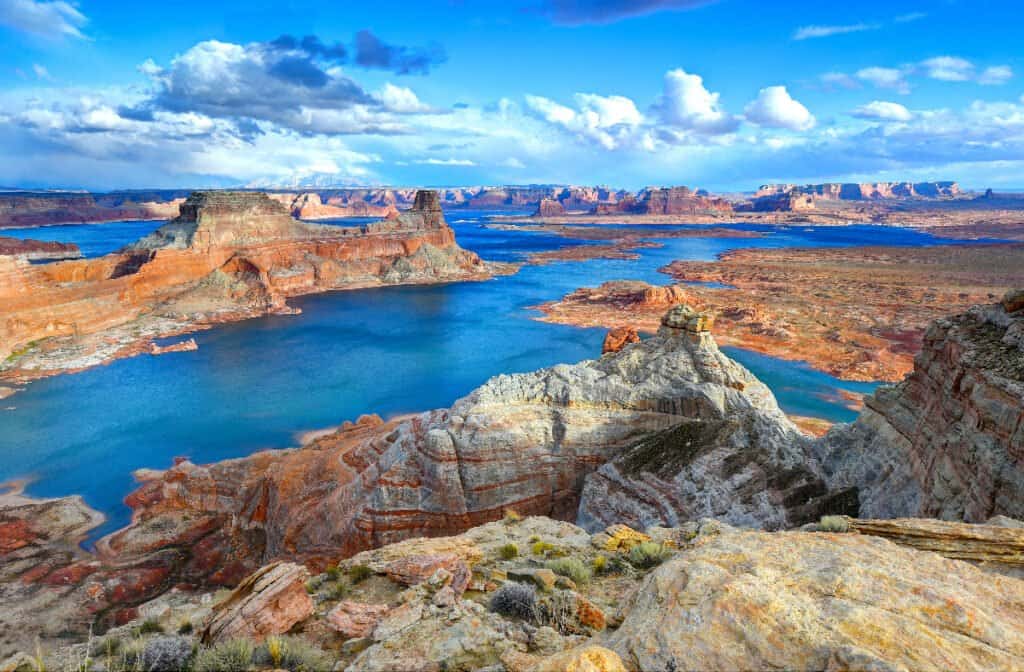
Enormous Lake Powell spans two states and offers every outdoor recreational activity imaginable.
©worldswildlifewonders/Shutterstock.com
Lake Powell has a total capacity of 26,214,900 acre-feet and a total surface area of 161,000 acres, making it the second-largest reservoir in the United States. Apart from providing massive water storage for the American states of Colorado, Utah, Wyoming, and New Mexico, Lake Powell is also well-known for its breathtaking scenery, attracting about two million tourists and visitors every year. Like Lake Mead, Lake Powell was also created by a dam (Glen Canyon Dam) on the Colorado River. It has a maximum depth of 532 feet and is located where the states of Arizona and Utah meet. The water that feeds the reservoir comes from melted snow during the spring months.
3. Lake Sakakawea, North Dakota
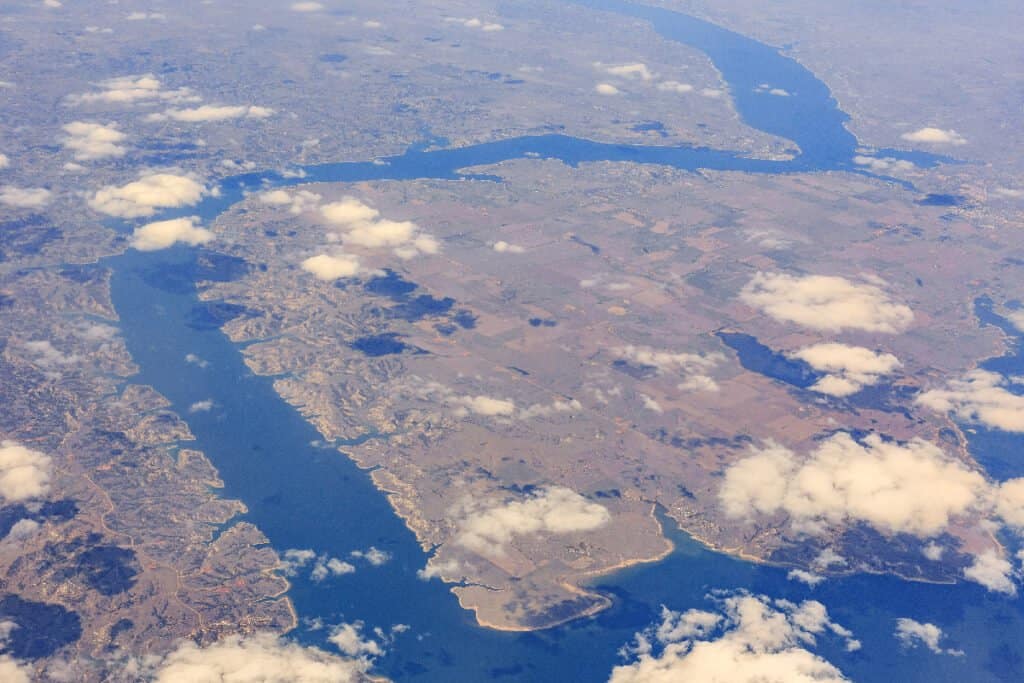
Lake Sakakawea has a maximum depth of 180 feet and is the largest man-made lake in North Dakota.
©Kit Leong/Shutterstock.com
Covering a total surface area of 307,000 acres, Lake Sakakawea in North Dakota has a full capacity of 24,300,000 acre-feet. The lake has a maximum depth of 180 feet and has a shoreline that extends up to 1,320 miles, making it the largest man-made lake in the state of North Dakota and the third-largest in the country. The reservoir was built by the Garrison Dam to host recreational activities such as boating, fishing, and others. Apart from this function, the dam was also created to provide irrigation, navigation, flood control, and hydroelectric power. Damming the Missouri River, Lake Sakakawea was finished in 1953 and took three to ten years to fill its capacity.
4. Lake Oahe, South Dakota
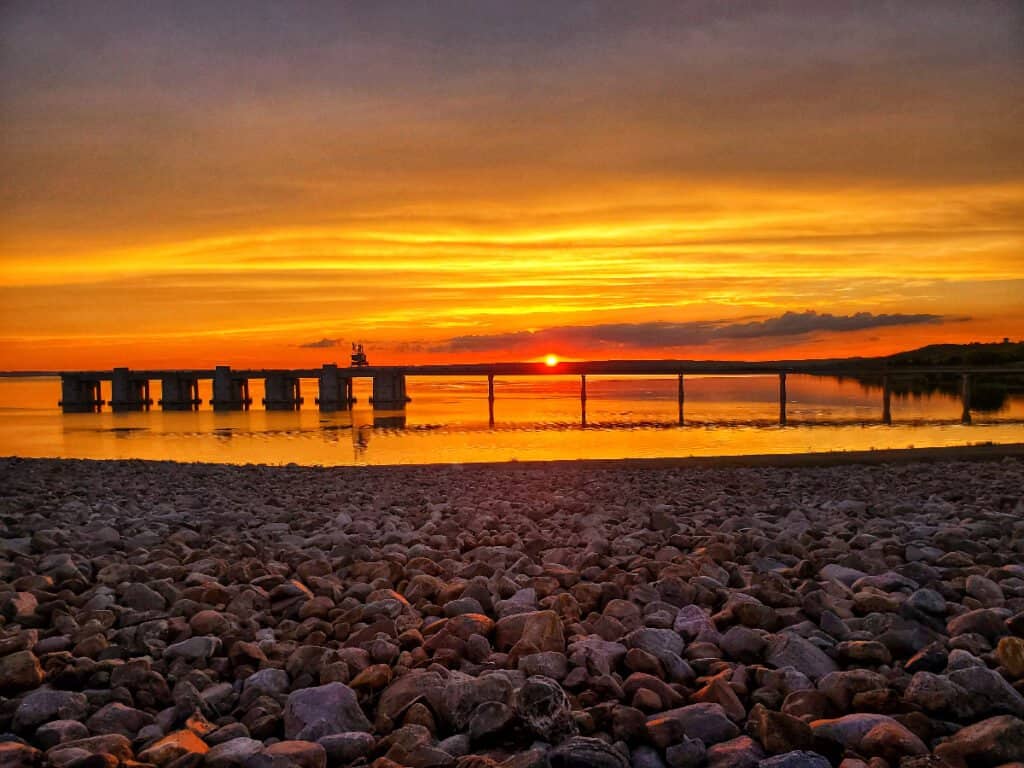
Covering a total surface area of 374000 acres, Lake Oahe is the fourth largest man-made lake in the U.S.
©C.drefs/Shutterstock.com
Lake Oahe ranks as the fourth largest man-made lake in the United States, with a total capacity of 23,500,000 acre-feet. It covers a total surface area of 374,000 acres and extends for 231 miles across South Dakota. The reservoir was built to serve as flood control and provide hydroelectric power, irrigation, recreation, navigation benefits, and habitat for diverse wildlife. It was created by the Oahe Dam, which is 245 feet tall and 9,360 feet long and is the fifth largest dam on the planet based on water volume. Lake Oahe may be man-made, but it hosts a rich ecosystem that includes many freshwater fish like walleye, pike, catfish, bass, and salmon. Nearly 1.5 million people visit the reservoir annually.
5. Fort Peck Lake, Montana

Fort Peck Lake was first filled in 1947 as part of a dam system on the Missouri River.
©iStock.com/bobloblaw
With a total capacity of 19,100,000 acre-feet, Fort Peck Lake ranks as the fifth-largest man-made lake in the United States. Fort Peck is a primary reservoir in Montana, built by the Fort Peck Dam in the Missouri River. It has an extensive shoreline that measures 1,520 miles in length, even longer than the coastline of California. Fort Peck Lake covers an entire surface area of 245,000 acres, and its deepest point measures 220 feet down. Fort Peck Lake was built primarily for flood control, water quality management, and hydroelectric power. Lying inside the Charles M. Russell National Wildlife Refuge, the reservoir also hosts many fish species.
6. Lake Roosevelt, Washington
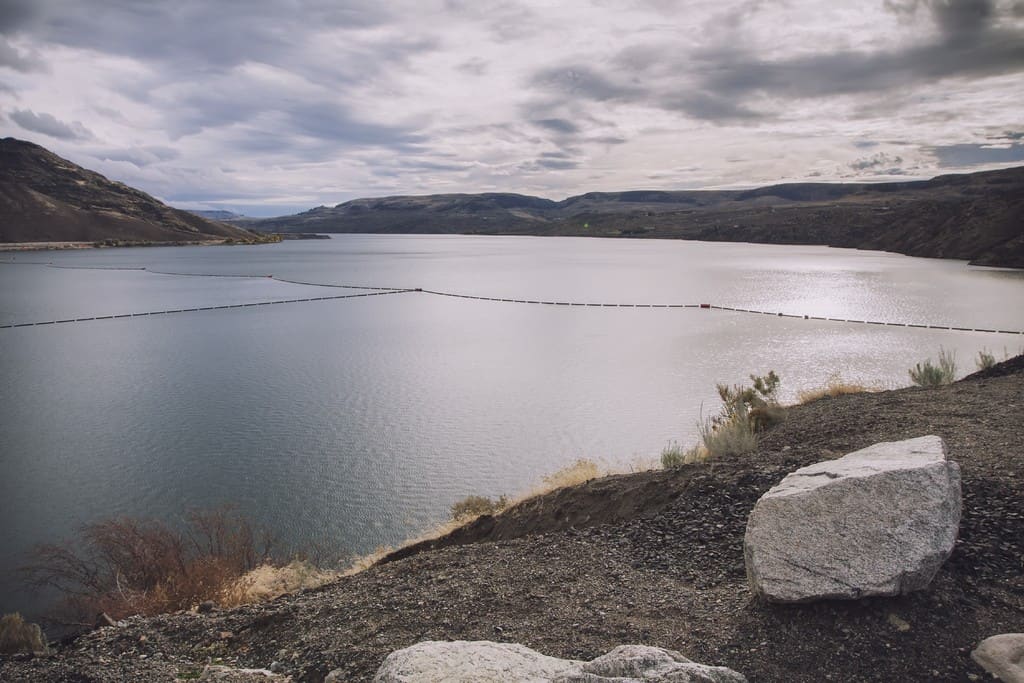
Covering 125 square miles, Lake Roosevelt is the sixth-largest man-made lake in the United States.
©Steven Pavlov / Creative Commons – License
More commonly called the Franklin D. Roosevelt Reservoir, Lake Roosevelt boasts a total capacity of 9,562,000 acre-feet, making it the sixth-largest man-made lake in the United States. Its wowing volume and surface area make it the largest Washington reservoir, covering 125 square miles. Lake Franklin also has a shoreline that extends over 600 miles and a maximum depth of 46 feet. Its main functions include hydroelectric power, water supply, recreation, and wildlife habitat. Plenty of freshwater fish species can be found in the reservoir, such as the northern pike, largemouth bass, smallmouth bass, walleye, and panfish. The lake was impounded by the Grand Coulee Dam on the Columbia River, constructed between 1933 and 1941.
7. Lake Cumberland, Kentucky
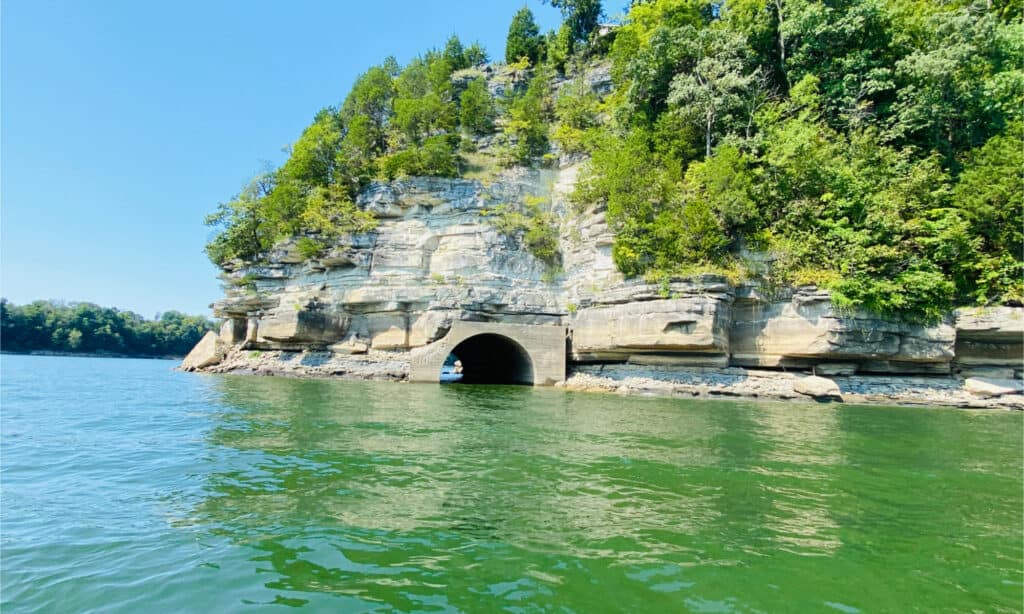
Lake Cumberland boasts a shoreline that extends 1225 miles across different counties in Kentucky.
©TcHampel/Shutterstock.com
With a total capacity of 6,089,000 acre-feet, Lake Cumberland lands seventh place in the largest man-made lakes in the United States. It also boasts a shoreline that extends 1,225 miles across different counties in Kentucky, namely, Wayne, Russell, Clinton, Pulaski, Laurel, and McCreary. The reservoir covers 65,530 acres or 265 square kilometers of surface area and contains 7.5 cubic kilometers of water, enough to inundate the whole Commonwealth of Kentucky with 3 inches or 76 mm of water. Lake Cumberland was originally constructed for flood control and hydroelectric power production. Over the years, the reservoir has been a primary source of tourism and has become an economic engine for the area. It was formed by the Wolf Creek Dam on the Cumberland River.
8. Lake Koocanusa, Montana
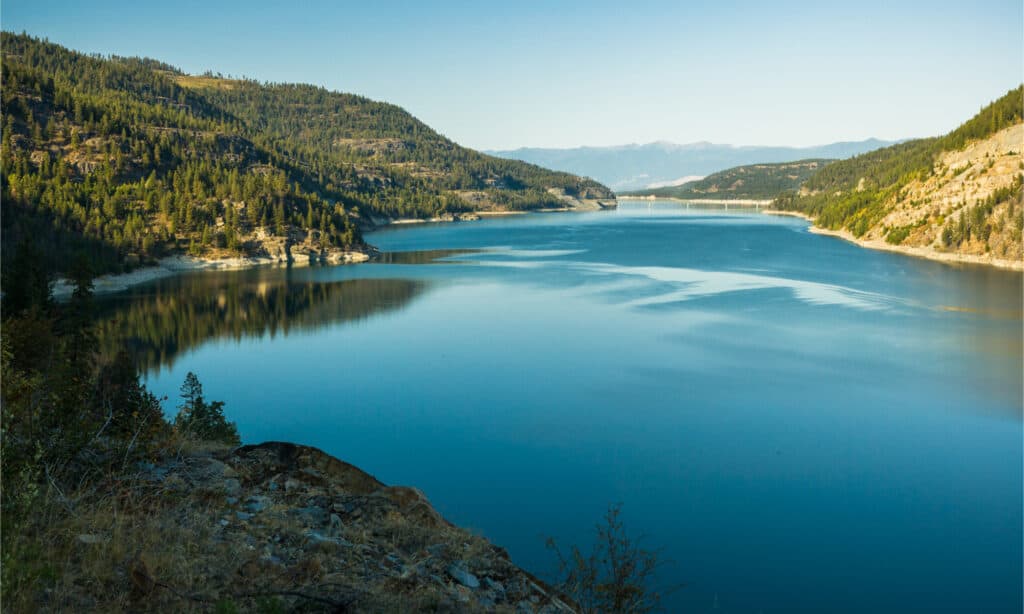
Lake Koocanusa’s name is derived from a combination of locations!
©Laurens Hoddenbagh/Shutterstock.com
Ranking as the eighth largest man-made lake in the United States, Lake Koocanusa boasts a total capacity of 5,869,200 acre-feet and has a maximum depth of 310 feet. Canada and the United States share the reservoir through British Columbia and Montana. It stretches 90 miles across the northern region of Montana and was formed by the Libby Dam on the Kootenai River in 1972. Lake Koocanusa contains 13% of the Columbia River system’s waters and serves primarily as a water supply to Canada and the U.S. The reservoir also provides flood protection, hydroelectric power, and habitat for wildlife. The bizarre name “Koocanusa” was formed from the first syllables of Kootenai River, Canada, and the USA (KooCanUSA). The lake is also home to the most common freshwater fish species such as burbot, sockeye salmon, and rainbow trout.
9. Shasta Lake, California

With a maximum depth of 517 feet, Mount Shasta is one of the largest man-made lakes in the United States.
©iStock.com/Jerry Hamblen
Also known as Lake Shasta, the Shasta Lake ranks among the largest man-made lakes in the United States. It has a total water capacity of 4,552,000 acre-feet with a maximum depth of 517 feet and a mountainous shoreline extending to 365 miles. Located in Shasta County, California, Shasta Lake is the largest reservoir entirely within the state of California. Lake Shasta was impounded by the Shasta Dam across the Sacramento River, with the primary function of providing flood control, hydroelectric power, water storage, and protection against saltwater. The reservoir’s crystal blue waters are ideal for recreational activities such as boating, fishing, skiing, and more.
10. Toledo Bend Lake, Louisiana And Texas

The Toledo Bend Lake is the biggest lake in Texas.
©Bonnie Taylor Barry/Shutterstock.com
Covering a total surface area of about 181,600 acres and having a total water capacity of 4,472,900 acre-feet, the Toledo Bend Lake is one of the country’s largest man-made lakes and the biggest in Texas. With a maximum depth of 34 meters, the lake also contains the largest water volume among all lakes in the state. This reservoir is shared by two states –Texas and Louisiana. The construction of the Toledo Bend Dam started in 1964 and was completed in 1969 on the Sabine River. The project’s primary purpose is for the generation of hydroelectric power, water supply, and recreation. With a surface area of 73,500 hectares, the Toledo Bend Lake can generate up to 92 megawatts of electrical power.
| Rank | Lake | Location | Size |
|---|---|---|---|
| 1 | Lake Mead | Nevada | 112 miles long/28,945,000 acre-feet |
| 2 | Lake Powell | Arizona | 161,000 acres/26,214,900 acre-feet |
| 3 | Lake Sakakawea | North Dakota | 307,000 acres/24,300,000 acre-feet |
| 4 | Lake Oahe | South Dakota | 374,000 acres/23,500,000 acre-feet |
| 5 | Fort Peck Lake | Montana | 245,000 acres/19,100,000 acre-feet |
| 6 | Lake Roosevelt | Washington | 125 sq miles/9,562,000 acre-feet |
| 7 | Lake Cumberland | Kentucky | 65,530 acres/6,089,000 acre-feet |
| 8 | Lake Koocanusa | Montana | 90 miles long/5,869,200 acre-feet |
| 9 | Shasta Lake | California | 365 miles long/4,552,000 acre-feet |
| 10 | Toledo Bend Lake | Louisiana & Texas | 181,600 acres/4,472,900 acre-feet |
Animals That Live In Man-Made Lakes

Geese are drawn to the open waters of man-made lakes
©Krasula/Shutterstock.com
Lakes are a very important part of our ecosystem for many reasons, one being they provide a home for several animal species. Man-Made lakes draw the same types of animals as naturally formed lakes. Many fish, such as trout, perch, and bass, live in lakes and feed on the plants such as algae. This helps control the growth, keeping everything balanced. Some man-made lakes are stocked with fish. How do fish come to live naturally in manmade lakes? Various waterfowl, such as ducks, geese, and, herons, begin to hunt for food in a new lake. When they travel from a previous body of water, sticky fish eggs will attach to their legs and travel with them to the new location. When the fish eggs hatch, those fish have a new habitat. In addition to fish and birds, amphibians (such as salamanders and frogs), turtles, snakes, and mammals (such as beavers and otters) reside in lakes.
What Is the Largest Man-Made Lake in the World?

The things that humankind can create never cease to amaze. Reservoirs–man-made lakes–are multi-functional creations. They help to control floodwaters, aid in the watering of crops, create sources to draw from for drinking water, and can be places for recreational activities like fishing, boating, and swimming.
So which reservoir breaks the record as the largest ever created by man? The world’s largest man-made lake is Lake Kariba on the border of Zimbabwe and Zambia, Africa. It was created with the construction of the Kariba Dam, and between the years of 1958-1963, it was filled with water, resulting in the flooding of the Kariba Gorge on the Zambezi River. This massive reservoir spans 5,400 square kilometers (2,150 sq miles), is 223 km (139 m) long, and 40 km (25 m) wide. Its maximum depth is 97 meters (318 feet).
Its primary purpose is to provide hydroelectric power for both of the nations it borders. However, the lake’s size and location in a dry region have made it a hot spot for wildlife like crocodiles and hippos, elephants, leopards, and more.
The lake is also a popular destination for tourists, and best suited to activities like boating, fishing, seeing beautiful scenery, and viewing wildlife. Swimming in the lake, especially alone, is dangerous due to the crocs and hippos.
The photo featured at the top of this post is © tmphoto98/Shutterstock.com
Thank you for reading! Have some feedback for us? Contact the AZ Animals editorial team.






